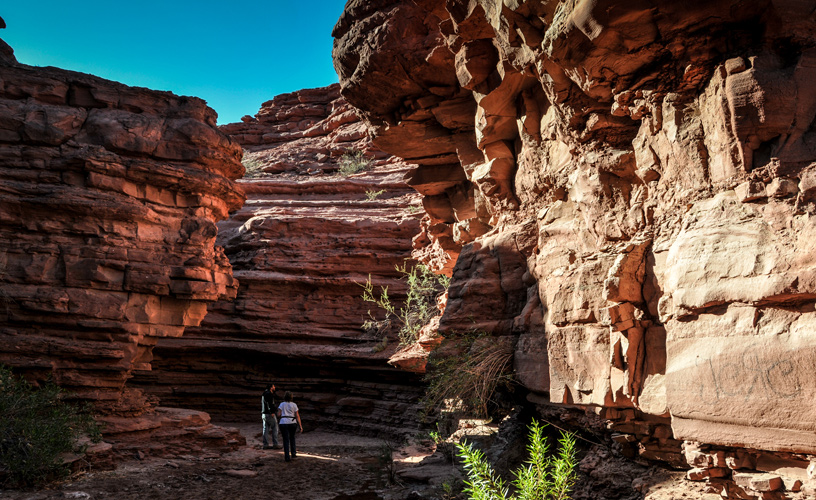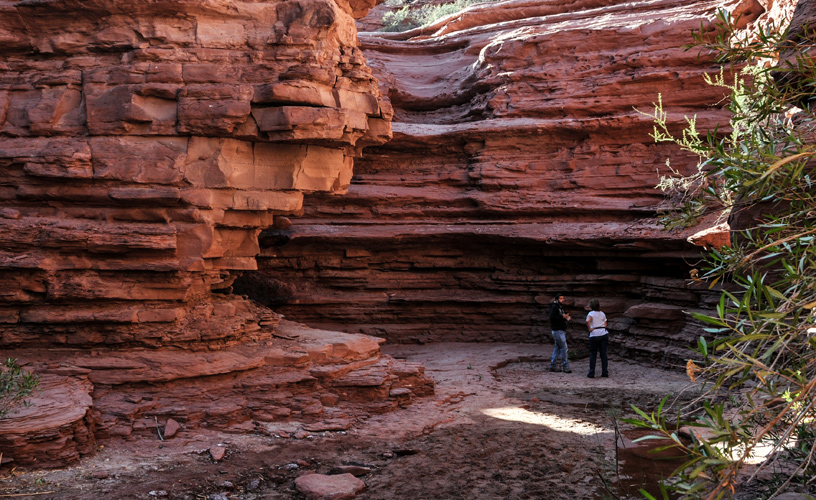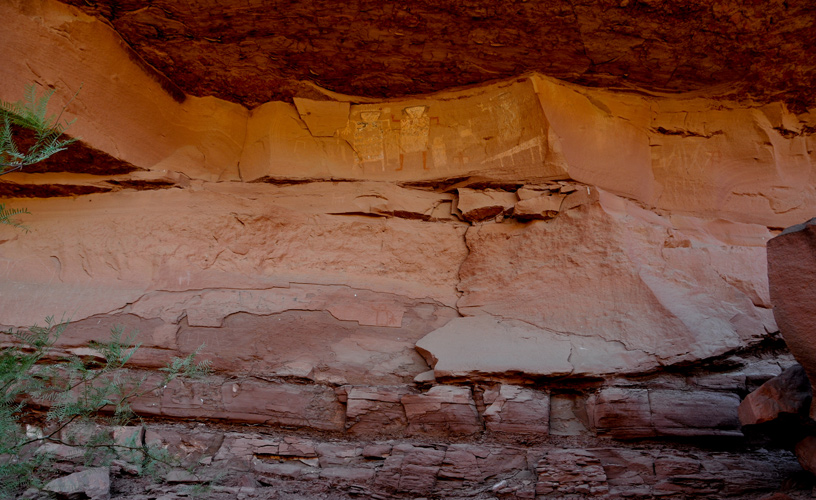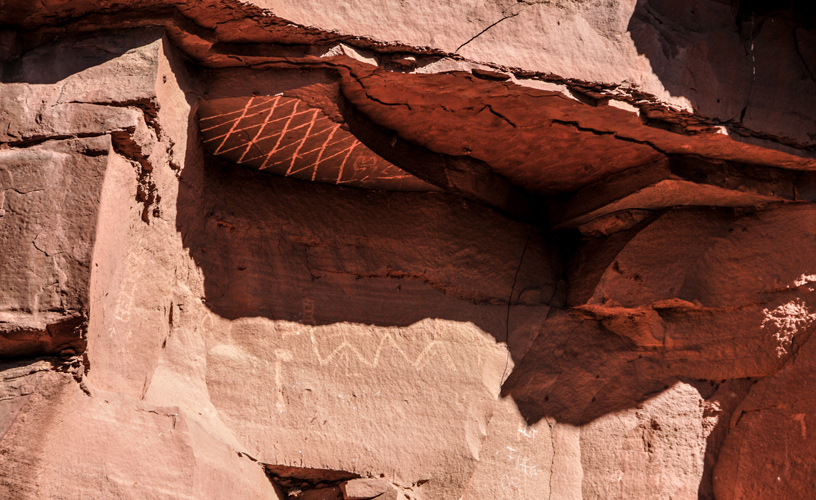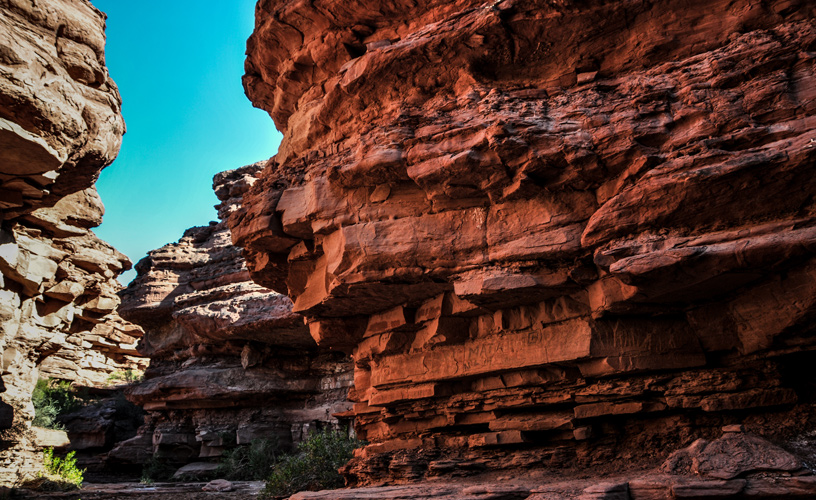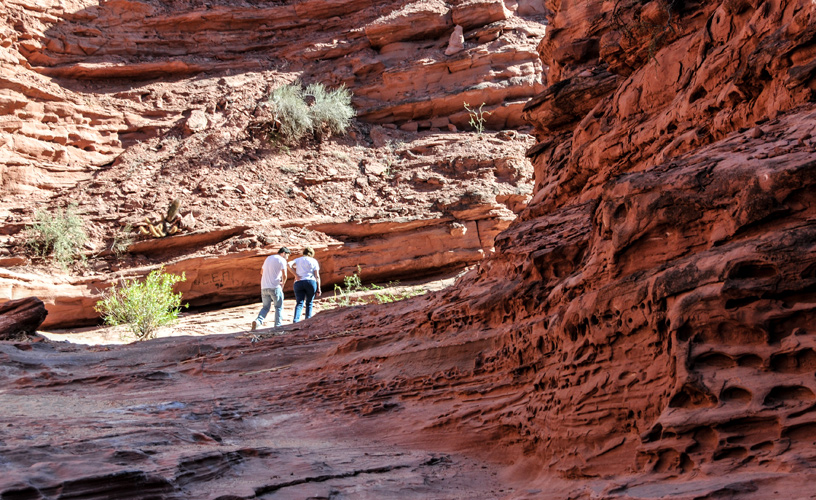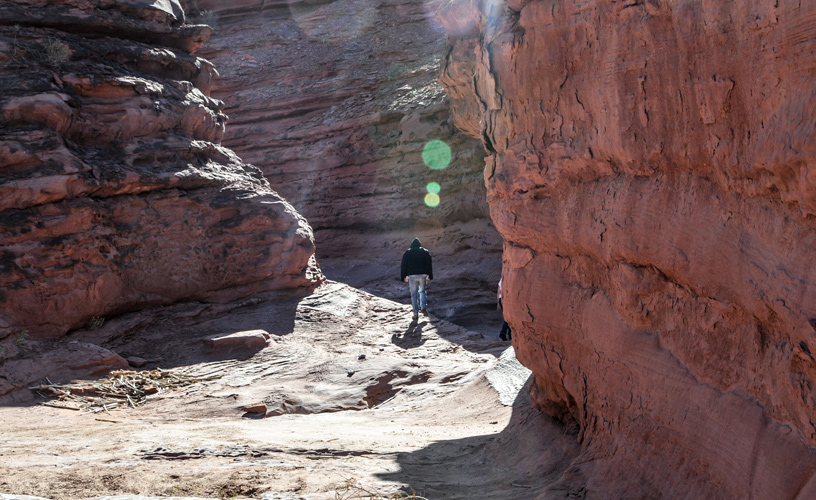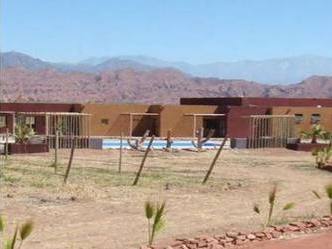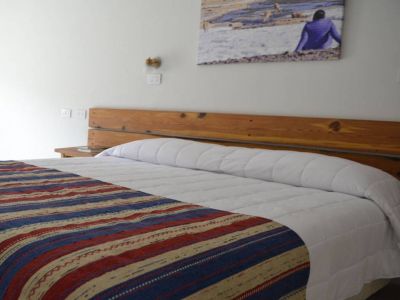We did not get too far away from Villa Unión in order to explore Anchumbil Canyon. We traveled back in time and were dazzled by a different scene: a strange rocky set that shelters cave paintings. Víctor Reinoso, a local guide, escorted us along a dirt road. After crossing several fords, with barely any water, the color of the soil became more reddish. The vegetation was almost nonexistent. Our hike started on a sandy area featuring an intense pink hue, which was uniform because of its iron oxide content. We stopped to see the first geological forms and then headed for the area where the pictograms are located. Printed in a semicircular fashion under an overhang, we could observe the figures described by Víctor. We saw a family with their animals and other silhouettes that would probably represent their chamanes. All of them were painted on the rock with natural tinges. It was incredible that they should have been preserved even after such a long time. According to studies, they were painted by the Diaguitas approximately 900 years ago.
Anchumbil and Its Pictograms
After that point, we walked along a corridor with two very high side walls. We were speechless. Víctor said: “This is a geologic fault where two opposed parts are separated mirror-like by a divergence process. This is known as El Sartén (the Saucepan), a semi-circular space with freshwater falling continuously from the Famatina. Taste it. It is delicious!"
He told us that singers usually come to this place to sing their tunes in the company of that never-ending rainfall background we could hear. There is an extremely special echo at this location which makes it a favorite choice among artists, according to Victor, who enjoys good music like most young local people.
The formations are distributed into layers and they date from the same geological period as those in Talampaya National Park and the Ischigualasto Basin. They are 280 million years old.
Mónica Pons
Eduardo Epifanio
Contact of the excursion or tour
Secretaría de Turismo Municipal
Joaquín V. Gonzalez Esq. Hipolito Irigoyen, Villa Unión, La Rioja, Agentina
Phone: +54 3825-470543
